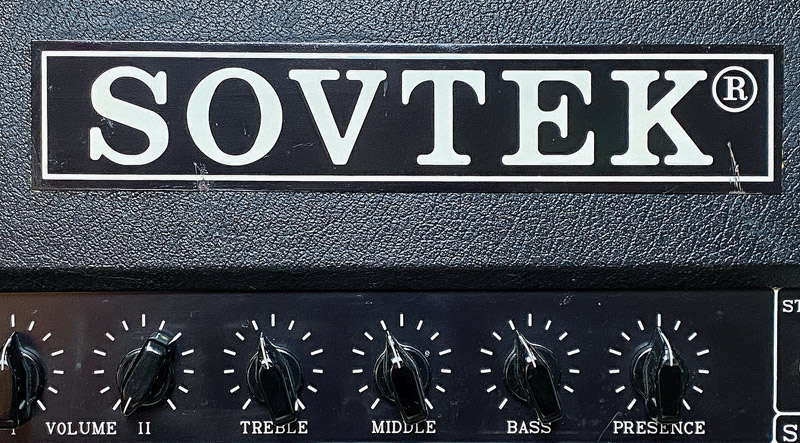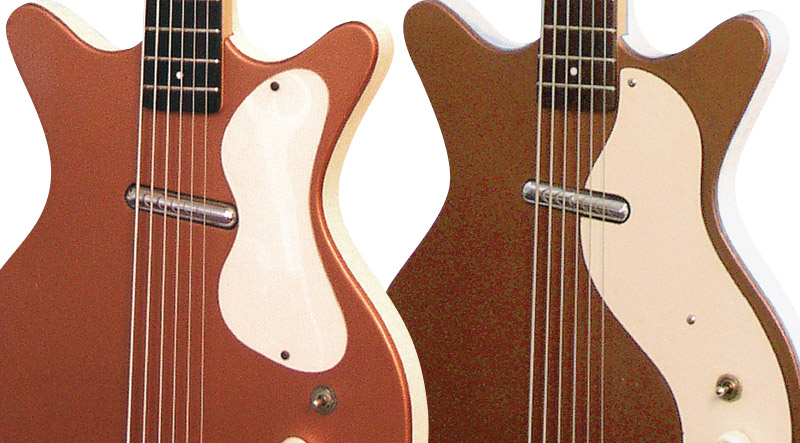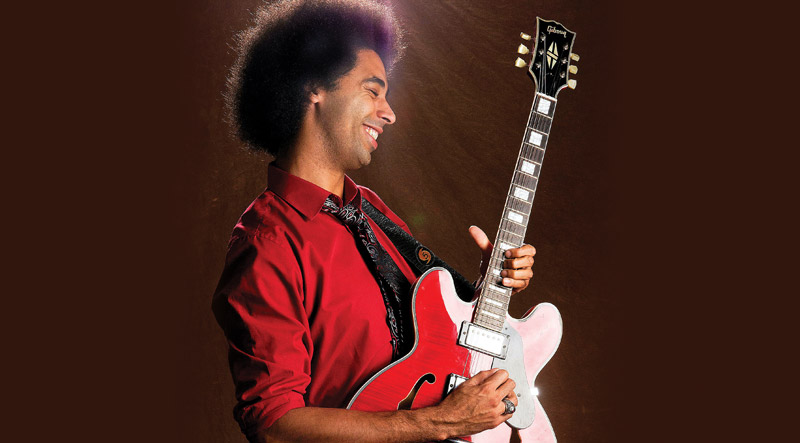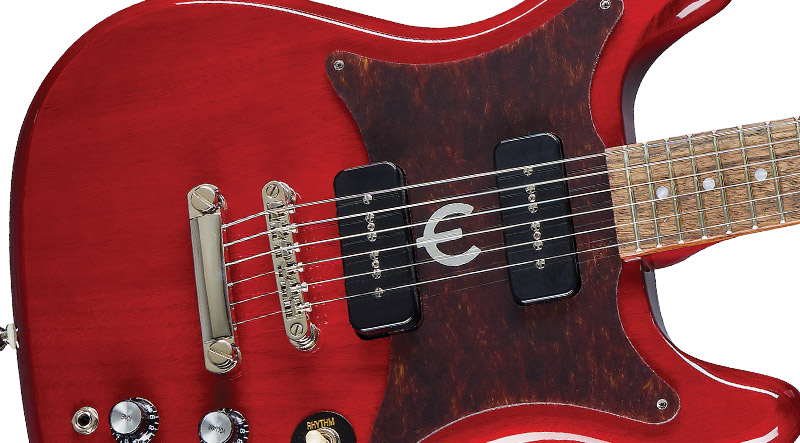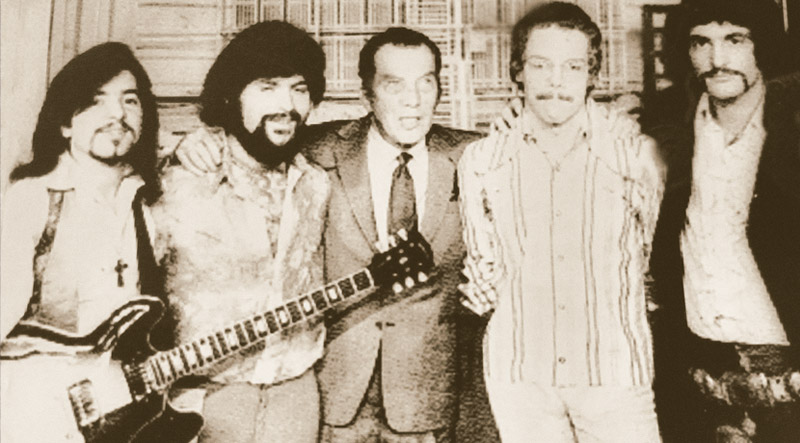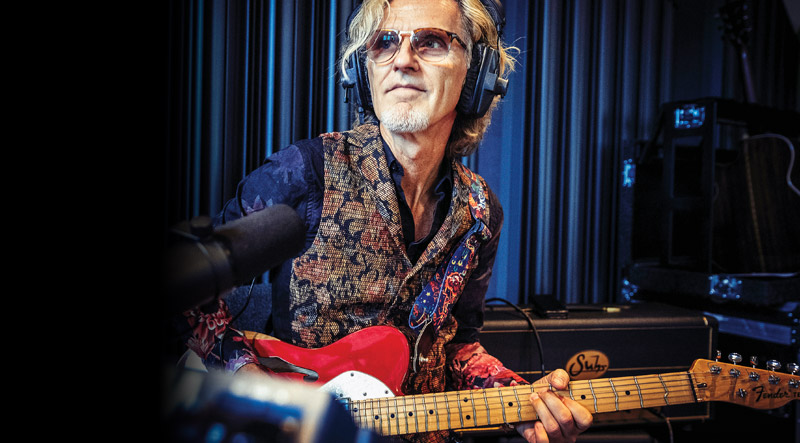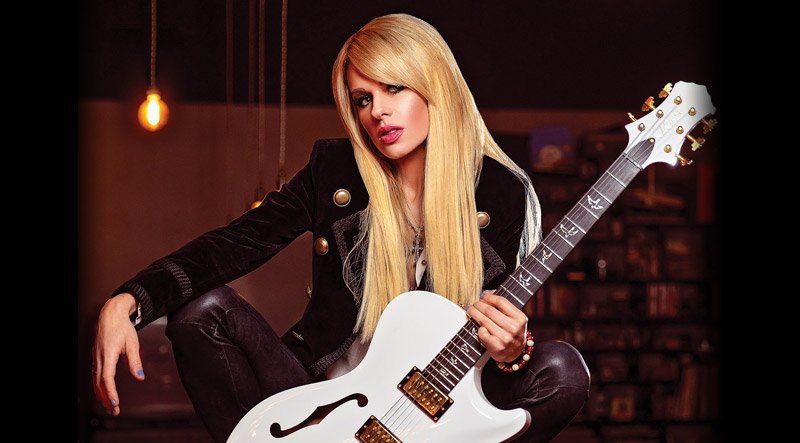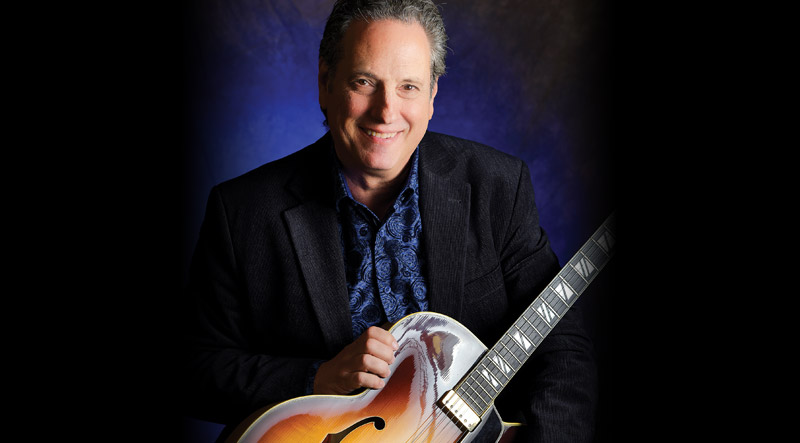
The world lost one of its most innovative and defining guitar voices on December 25, 2020. Bluegrass maestro Tony Rice – singer, composer, supremely accomplished sideman, solo artist, and flatpicking virtuoso – personified the evolution of an American folk form and its cross-pollination with jazz, classical, and pop tangents. With Rice’s imaginative vision and prodigious technique, bluegrass became “newgrass” – an art form. He was the avatar of a new generation of guitar players and caused a paradigm shift in the music tantamount to Wes Montgomery’s efforts in jazz and Jimi Hendrix’s expansion of the rock world.
Bluegrass epitomized American roots music of the 1930s and ’40s. Spawned in Appalachia, it’s an acoustic medium with distinctive three/four-part vocal harmony that boasted performers like Earl Scruggs, Lester Flatt, the Stanley Brothers, and progenitor Bill Monroe. Monroe called it “old time mountain hillbilly music,” yet his Blue Grass Boys provided the emblematic name for the genre. The characteristic ensemble was a string band – violin, banjo, mandolin, upright bass, and rhythm guitar, sometimes augmented with resonator guitar, harmonica, or Jew’s harp. Their idiomatic repertoire consisted of Anglo-American jigs, ballads, and reels informed by blues, folk and ragtime jazz, often carried by a fiddle lead instrument – a mix which grew and flourished in regional rural dances. Bluegrass became a marketing term and widened listeners’ experience with advances in audio recording and was bolstered by the post-war country-and-Western boom; 1948 marked the beginning of its golden age with songs from Monroe and the Stanley Brothers making a national impact on radio. However, bluegrass largely attracted a niche audience until the folk wave of the early ’60s brought it to a burgeoning youth market. It was in that milieu that Tony Rice came of age and planted the roots of his style.
 “Mule Skinner Blues” boasts one of the greatest guitar breaks in bluegrass. This driving, flat-picked flight corroborates that opinion. The trademark rhythmic intensity and powerful execution are apparent from the first phrase, as are other telling aspects of Rice’s style in microcosm, such as skillful transitions from open strings to fretted notes. His emblematic use of approach tones, here notably the A#-B in measures 3-5 and 11-12 over G and the D#-E over C in 8-9, is ubiquitous in his repertoire. Similar purposeful decorations, often embellished with similar slides along with pull-offs and hammer-ons, are found in countless Rice solos and fills played over a G shape, whether capoed or in nut position, as in this example. Also noteworthy are his blue notes; the minor-seventh tone imparting a dominant-seventh color to G and C chords, flatted fifth; Db in 3-4, and the minor third in 4 over G and in 10 over C. The minor-ninth leap in 10 (C-Db) employs a borrowed blue note to produce an attractive tension over C (C7b9), alluding to TR’s jazz inclinations.
“Mule Skinner Blues” boasts one of the greatest guitar breaks in bluegrass. This driving, flat-picked flight corroborates that opinion. The trademark rhythmic intensity and powerful execution are apparent from the first phrase, as are other telling aspects of Rice’s style in microcosm, such as skillful transitions from open strings to fretted notes. His emblematic use of approach tones, here notably the A#-B in measures 3-5 and 11-12 over G and the D#-E over C in 8-9, is ubiquitous in his repertoire. Similar purposeful decorations, often embellished with similar slides along with pull-offs and hammer-ons, are found in countless Rice solos and fills played over a G shape, whether capoed or in nut position, as in this example. Also noteworthy are his blue notes; the minor-seventh tone imparting a dominant-seventh color to G and C chords, flatted fifth; Db in 3-4, and the minor third in 4 over G and in 10 over C. The minor-ninth leap in 10 (C-Db) employs a borrowed blue note to produce an attractive tension over C (C7b9), alluding to TR’s jazz inclinations.
David Anthony Rice was born in Danville, Virginia, on June 8, 1951. He was raised in Los Angeles and exposed to bluegrass music at an early age through his father, Herb, an amateur guitarist/mandolinist. The sounds of Monroe, Flatt & Scruggs, Louvin Brothers, and Reno & Smiley filled his ears, and by age four he was teaching himself the requisite guitar chords and runs of the style, albeit with some “wrong fingerings,” many of which he continued to use throughout his lifetime. He was almost 10 when he formed his first band, a bluegrass quartet with his brother and neighbors. Though his focus put him at odds with schoolmates obsessed with rock and the British Invasion, it aligned him with future bluegrass innovator Clarence White, seven years his senior. The two had become friends in ’59 and shared common interests. White’s group, the Country Boys (later the Kentucky Colonels), were, by TR’s reckoning, the first bluegrass band in Southern California, and appeared weekly on Herb Rice’s local radio show. White presaged an expansion of the bluegrass genre and is widely acknowledged as the first picker to make the acoustic guitar a lead instrument in bluegrass, forging the progression from traditional to modern bluegrass.
In the mid ’60s, White’s versatility led him to become a sought-after L.A. studio player on electric and acoustic guitar, and by ’68 he was a full-time member of the Byrds in their country-rock period, showcased by Dr. Byrds & Mr. Hyde. With Gene Parsons, he was also co-inventor of the famed B-bender installed subsequently on enumerable Telecasters. White was the primary role model and mentor to Rice, who succinctly put it, “When I heard Clarence I knew that was what I wanted to learn.” Taking a cue from White, in the late ’60s he pursued an inclusive approach that blended traditional bluegrass with jazz influences via Dave Brubeck, John Coltrane, Django Reinhardt, Wes Montgomery, and George Benson as well as rock inspiration from Hendrix.
 This phrase from “Wildwood Flower” conveys the chordal side of Rice’s playing. Capoed at the 4th position, it finds him working out of the C shape to render the piece in E. A very traditional flatpicked bluegrass approach is employed throughout in arpeggiating and attacking chord partials, and the chords are sustained to maximum duration to produce a flowing legato impression depictive of its Appalachian ancestry. Rice uses a full-fingered C/G form for E/B in measures 5 and 15 to strengthen this effect and typically employs his thumb to fret the low A in 9. Note the myriad hammer-on and pull-off ornaments in the phrase. His patented cross picking (two down strokes and one up stroke) is heard in 7-8 to achieve banjo-roll figurations through the E-G7-C#m chord changes.
This phrase from “Wildwood Flower” conveys the chordal side of Rice’s playing. Capoed at the 4th position, it finds him working out of the C shape to render the piece in E. A very traditional flatpicked bluegrass approach is employed throughout in arpeggiating and attacking chord partials, and the chords are sustained to maximum duration to produce a flowing legato impression depictive of its Appalachian ancestry. Rice uses a full-fingered C/G form for E/B in measures 5 and 15 to strengthen this effect and typically employs his thumb to fret the low A in 9. Note the myriad hammer-on and pull-off ornaments in the phrase. His patented cross picking (two down strokes and one up stroke) is heard in 7-8 to achieve banjo-roll figurations through the E-G7-C#m chord changes.
In 1970, Rice moved to Louisville, Kentucky, to join the Bluegrass Alliance. However, the narrow circumscribed format of traditional bluegrass wouldn’t confine an artist of his range. With his great facility and imagination, the teenager soon found himself in one of the first progressive bluegrass groups, J.D. Crowe’s New South. This iconoclastic unit added drums and amplification to the acoustic string-band format, and featured like-minded “newgrass” exponents like Jerry Douglas (resonator guitar) and Ricky Skaggs (fiddle/mandolin). During this period, Rice met another kindred spirit in mandolinist David Grisman, and in ’75 made a quantum leap into the future when he joined the David Grisman Quintet. Their uncommon hybrid sound blended bluegrass, Gypsy jazz, classical, Old World Mediterranean string-band and fusion. Their repertoire was documented on The David Grisman Quintet (’77) debut and Hot Dawg (’78), with Grisman and Rice compositions as well as a reinterpretation of Django’s “Minor Swing.” Concurrently, Rice began to study theory, read chord charts, and learn jazz improvisation with John Carlini in order to up his already formidable game.
In ’78, Rice left Grisman’s band to pursue a solo career. The labels “new acoustic music” and “newgrass” were attached to him in an attempt to categorize the diverse post-modern nature of his output in the Tony Rice Unit, eponymous albums, and the Bluegrass Album Band; Acoustics purveyed a bluegrass-jazz-folk amalgam, exemplified by Rice originals and Wes Montgomery’s “Four on Six,” while the breakthrough recording Manzanita emphasized bluegrass and folk pieces, and Mar West contained Miles Davis’ “Nardis.” These set the tone for future multifaceted TR Unit albums, enlivened by the participation of Grisman, Douglas, Skaggs, Sam Bush, Richard Greene, and Mike Marshall. In the ’80s and ’90s, Rice released solo albums distinguished by outings like Tony Rice, Church Street Blues, Cold on the Shoulder, Me & My Guitar, and Crossings, and programmatic records such as Sings and Plays Bluegrass and Sings Gordon Lightfoot. By contrast, Rice’s supergroup Bluegrass Album Band, founded in ’81 with Crowe, expounded on traditional and modern bluegrass tenets developed in New South and released six volumes of standards from ’81 to ’96. The aggregation revisited the music’s core repertoire established by Monroe, Stanley, Flatt & Scruggs, Doyle Lawson, and Reno & Smiley, and sprinkled in suitable pieces from Chris Hillman, Gram Parsons, and Jim Croce. Rice also stayed active in stellar collaborations with Skaggs, Grisman, Jerry Garcia, Norman Blake, Béla Fleck, Mark Johnson, Peter Rowan, Vassar Clements, and John Carlini. He assembled an “anti-supergroup” with brother Larry, Hillman, and banjoist Herb Pedersen, which recorded three albums between ’97 and ’01. As a session player, Rice performed on recordings from Emmylou Harris, Mary Chapin Carpenter, Bill Keith, Jon Sholle, Eric Thompson, Darol Auger, Alison Brown, Bryan Sutton, and many others.
 When asked what he practiced to maintain his skills, Rice replied with a reference to the challenging final phrase in “Opus 57” (David Grisman Quartet), adding it is “one of the hardest licks I know.” Indeed, even a cursory glance reveals it has technical commonalities with the neoclassical shred of Malmsteen, et al. Note the atypical minor modality of the melody as well as its sequential patterns reminiscent of classical music and references to diminished chords. He capos at the fifth position to play the passage in a D minor shape transposed to G minor, which is the only obvious connection with bluegrass. The descending syncopated chromatic line in 8-9 suggests an altered D7 chord and is characteristic of both TR in his jazz pursuits and the post-modern “Dawg music” sounds cultivated by Grisman.
When asked what he practiced to maintain his skills, Rice replied with a reference to the challenging final phrase in “Opus 57” (David Grisman Quartet), adding it is “one of the hardest licks I know.” Indeed, even a cursory glance reveals it has technical commonalities with the neoclassical shred of Malmsteen, et al. Note the atypical minor modality of the melody as well as its sequential patterns reminiscent of classical music and references to diminished chords. He capos at the fifth position to play the passage in a D minor shape transposed to G minor, which is the only obvious connection with bluegrass. The descending syncopated chromatic line in 8-9 suggests an altered D7 chord and is characteristic of both TR in his jazz pursuits and the post-modern “Dawg music” sounds cultivated by Grisman.
STYLE
Rice is a master of traditional, modern, and post-modern bluegrass. A propulsive rhythm guitarist, he provided the fundamental “boom-chick” broken-chord backing patterns and connective bass runs of the style, but is best known for his virtuosic flatpicked lead lines. Traditionally, bluegrass guitar was a rhythm instrument assigned with few exceptions to an accompanying role. Rice changed that perception while seeing a course for post-modern expressions. A descendant of the Doc Watson/Norman Blake/Clarence White lineage, he flaunted a diverse lead style made bolder with rapid and articulate single-note licks, runs, and riffs. His priorities were “tone, timing and articulation,” evident in technical phrases delivered at any tempo, giving rise to progressiveness displayed by Bryan Sutton. In the strict bluegrass, setting Rice frequently operated in the customary open G-major shape and used a capo to change keys. Telling examples include “Red Haired Boy” (A, capo at second fret) and “Your Love is Like a Flower” and “Old Train” (Bb, capo 3rd). On other occasions he preferred capoing an open C-major shape, as in “Home From the Forest” and “Wildwood Flower” (E, capo 4th). In “Little Sadie” he capoed at the second fret to perform Dm chords and lines in E minor. By contrast, he preferred the standard position for “Wild Horse” and “Jerusalem Ridge.” With Grisman’s post-modern group, he deliberately played in various keys without a capo. TR occasionally used Dropped D tuning and hybrid picking to play ballads like “Shenandoah.”
True to the bluegrass form, TR favored chord-based diatonic runs and melodies suggesting a fiddle-tune quality in their rhythms, contours and content. In improvisations he often added color tones to his melodies, such as chromatic passing tones, blue notes like the flatted third, fifth and seventh, and neighbor notes as decorations, particularly to approach the major third of a tonic chord from a half step below (A# to B over a G major chord). These were subjected to greater jazz inflections and more-sophisticated harmonic allusions in the intro of “Shenandoah” and pieces like “Devlin” and “Nardis,” which found him employing modal and extended melodies, atypical pentatonic licks, evocative half-step string bends and quick scalar sequences. Rice generally employed alternate picking for single-note melodies, though he deviated for certain musical effects. Case in point is his specific pattern of two downstrokes and one upstroke across three high strings for what he called “cross-picked banjo-style rolls,” heard in the arpeggiations and voice-leading of chords in “Wildwood Flower.”
ESSENTIAL LISTENING
Acoustics, Manzanita, Cold on the Shoulder, and Acoustic Allstars Live ’88 are prime examples of Rice’s magic in the studio and onstage. His playing in David Grisman’s quintet, Tony Rice Unit and the Bluegrass Album Band are also highly recommended.
ESSENTIAL VIEWING
There is a wealth of Rice performances online. Among must-see moments are “Church Street Blues,” “Nine Pound Hammer” (New South, ’75), “Bluegrass Breakdown,” “Shenandoah” (from the 2000 Grey Fox Festival with closeups of his flat/hybrid picking technique), “Blue Railroad Train” with the TR Unit, “Limehouse Blues” with Chet Atkins, Mark O’Connor, Grisman, Douglas, and Fleck, and several illuminating clips from his instructional videos.
SOUND
Rice was a committed acoustic guitarist and never owned an electric guitar. He was accorded the family Martin D-18 when he was eight years old and was satisfied with it until he heard the D-28 played by Clarence White; Rice purchased the guitar after White’s untimely death in ’73, paying $600, and it became his mainstay for five decades. One of only 11 made in 1934, the first year of 14-fret D-28s, it bears Martin’s distinctive white herringbone binding, and was modified (before White’s ownership) with a 21-fret fretboard and enlarged soundhole. Rice had the neck re-set, fretboard bound, and re-fret by Randy Wood. He also learned the original owner was Paul Westmoreland, who wrote the bluegrass/country classic “Detour.” In Crowe’s New South, Rice amplified the Martin with a Barcus-Berry pickup. He also played Ovation guitars in the ’70s, heard prominently on Manzanita. Santa Cruz has marketed a Tony Rice signature model since the ’80s. It uses aged Sitka spruce and Indian rosewood. Not a copy of his D-28, it was designed in collaboration to reflect his desire for a dreadnought with more-defined low end but the requisite boom for rhythm work, and a more-articulate and balanced mid-treble range for solo lines. Dana Bourgeois created a tribute model in 2014, with enlarged soundhole and deliberate sonic details. It was intended to be auctioned for the ailing Rice, who was unable to perform live.
Rice preferred Thomas Vinci brass-wound medium-gauge strings and fashioned his own flat picks from three-sided tortoiseshell pieces by filing them to shape and size. He felt tortoiseshell provided the best density in relation to thinness for his attack and comfort, as conventional plastic types would have to be 1/4″ thick or greater to produce a comparable sound.
This article originally appeared in VG’s June 2021 issue. All copyrights are by the author and Vintage Guitar magazine. Unauthorized replication or use is strictly prohibited.


